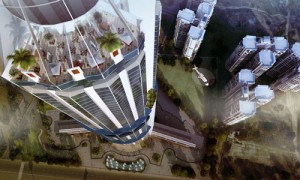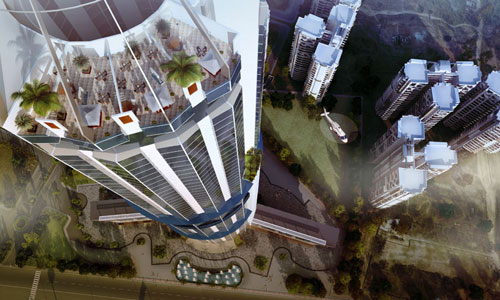By: Ravi Sinha
Track2Realty Exclusive
3rdof the series
 Not all experts and analysts are bullish in a country which has just two of world’s 276 skyscrapers. Prof PSN Rao, Professor of School of Planning and Architecture has a different take when he says high rise buildings look good in the urban city scape. However, in terms of the power they consume, the high initial costs of construction and high periodic costs of maintenance, perhaps they are not viable for residential structures.
Not all experts and analysts are bullish in a country which has just two of world’s 276 skyscrapers. Prof PSN Rao, Professor of School of Planning and Architecture has a different take when he says high rise buildings look good in the urban city scape. However, in terms of the power they consume, the high initial costs of construction and high periodic costs of maintenance, perhaps they are not viable for residential structures.
Commercial buildings could perhaps take in the additional costs as big corporate can afford to purchase high end spaces in such buildings.
“Tall buildings are firstly very expensive as the foundations need to be deeper and stronger. Further, the height also places requirements for protection against high wind loads. Earthquake resistance is another area which needs careful attention. Vertical transportation is needed to be carefully planned so that evacuation of the building during emergencies becomes easy. Specialised fire protection systems also need to be installed so as to protect the building and the lives of the people living in it,” says Prof Rao.
Various other services also need careful attention. Right from high powered water pumps to electrical solutions,high rise buildings also have to necessarily be fully airconditioned since there is no question of opening windows.
Water proofing, sunlight glaze control, etc. are other considerations which need careful planning.Buildings need to have a minimal carbon footprint and should be sustainable.
Meanwhile, developers who have sky high ambitions believe skyscrapers provide a lot many facilities and amenities and it needs awareness and government help in making it a common practice.
But while skyscrapers around the world are generally positioned near Central Business Districts, many of the Indian projects, especially in Delhi-NCR don’t have this locational advantage.





